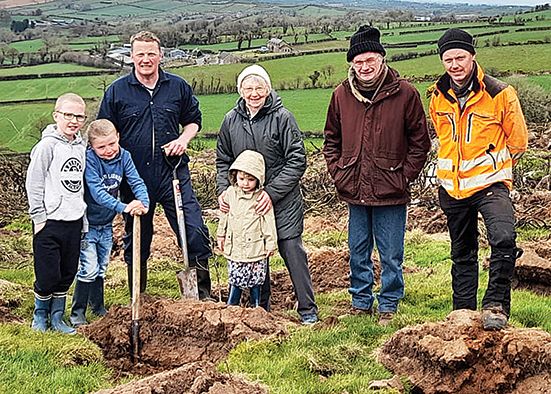Birds of prey finding a safe home
Birds of prey finding a safe home
3 November 2021

BIRD feeding for the majority of people means putting out some seeds and nuts but Stephen and Karen Malcomson have taken this to the next level and beyond.
At their farm in the townland of Dechomet in Ballyward on the western slopes of Slieve Croob, the couple have developed a wildlife sanctuary — The Red Kite Retreat — with a custom built hide for guests to observe the fantastic aerial displays of the Red Kites.
The retreat is the only Red Kite feeding station and bird hide in Ireland, located on the Malcomson family farm.
Although the Red Kites were persecuted to extinction in Ireland over 200 years ago, they were successfully reintroduced in 2008 when the RSPB Northern Ireland, the Golden Eagle Trust and the Welsh Kite Trust — in conjunction with local councils — began an ambitious reintroduction project to help bring the magnificent birds back to Northern Ireland.
The Malcomsons’ farm lies at the epicentre of their habitat in Northern Ireland and visitors can now sit in the newly constructed bird hide and watch these majestic birds feed and soar through the skies.
In addition, a planning application has been submitted for a caravan and camping site on the farm, with a classroom for education and conservation events.
“We are now officially open,” said a delighted Karen.
“It has been a long road and we wish to thank you everyone who has helped us get to this point. The website is now live. It is www.redkiteretreat.co.uk and we are regularly updating our Facebook page @redkiteretreat. For more information please pay us a visit on Facebook, like and share the page”.
Red Kites were in the area and over a year ago and Stephen started feeding them and as this continued more and more started turning up daily.
Red Kites are a bird of prey and have a huge wingspan of up to 1.75 metres; they are reddish brown with black wingtips and a grey head.
They have a distinctive V-shaped tail which they use like a rudder as they twist and turn through the air on thermals and their call is a long whistle.
Red Kites are primarily scavengers and a big part of their diet is made up of dead animals (carrion), including road-kill. They also follow tractors when ploughing and swoop down to grab any small animals that have been killed by the mowers or brought to the surface.
They are no threat to livestock and the largest animal they have the power and speed to kill is a young rabbit. Red Kites, like all other birds of prey, are protected by law and to harm, disturb or kill them is a criminal offence.
The new Red Kite Retreat bird hide has already become very popular with wildlife photographers and bird watchers and booking a slot is essential.
Three generations of the Malcomson family have also helped to plant some of the first of 24,000 native trees on a 24-acre site to create The Warrior’s Wood on Dechomet Mountain.
The main contractor, Scottish Woodland Ireland Ltd, managed the forest expansion and farm diversification project and planted Irish Oak, Hazel, Holly, Scots Pine and Downy Birch. Stephen and Karen also created two new ponds to encourage wildlife and sowed a new wildflower meadow.
Warrior’s Wood is the initial habitat enhancement works which form part of the new eco-tourism development known as the ‘Red Kite Retreat’.
Stephen and Karen are the project’s co-founders and wanted a means of diversifying their farm business to ensure future sustainability.
Currently, Stephen has a pig and beef unit on the farm but said “farming enterprises have to adapt and evolve to ensure sustainability for future generations of farmers. I see no reason why modern farming practices cannot go hand in hand with conservation, environmental enrichment and encouraging biodiversity”.
The Red Kite Retreat project aims to create a unique tourist and visitor facility and focuses on conservation and education about the Red Kite bird of prey, with the creation of the Warrior’s Wood the first step in the project.
The Wood has been designed to mimic ancient woodland with species adapted to grow in elevated and exposed locations, with the planting including Scots pine, oak, birch, aspen, rowan, hawthorn and juniper.
The Scots pine is favoured by native red squirrels which it is hoped will be reintroduced once the woodland has matured, while Juniper is also being established on the site.
Updates in the Red Kite retreat are available on Facebook @redkiteretreat, by logging on at www.redkiteretreat.co.uk or telephone 07526486340


